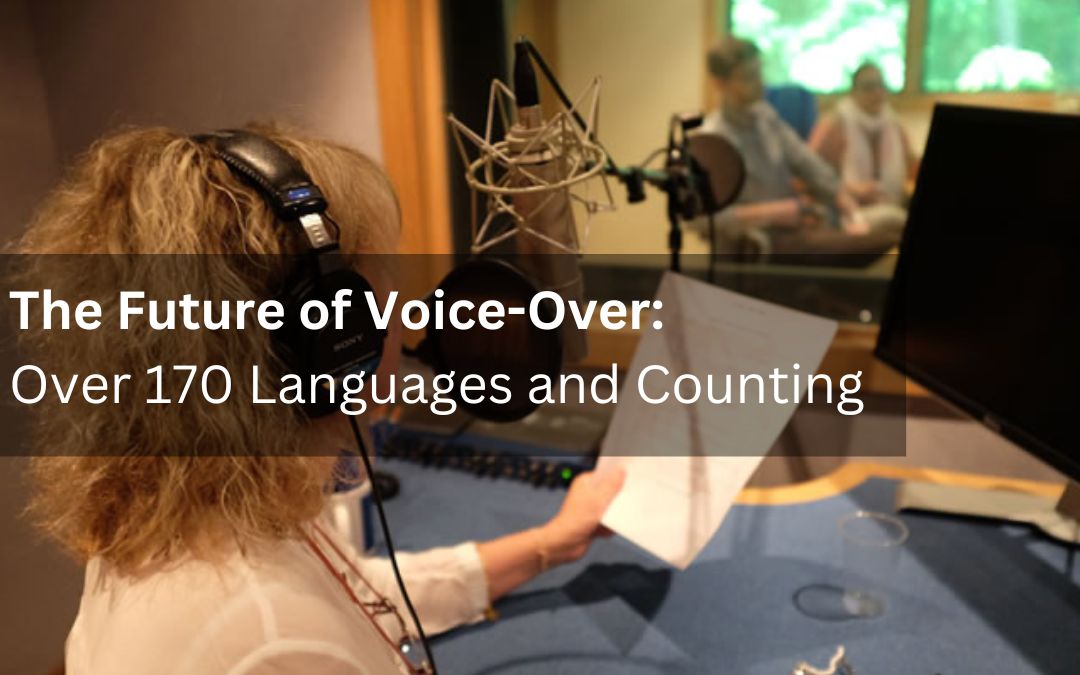In the realm of multimedia, voice-over has emerged as an indispensable tool, bridging gaps and connecting audiences worldwide. With the proliferation of digital content, the demand for voice-over services has skyrocketed. But what’s truly remarkable is the linguistic diversity that the industry now offers. With over 170 languages available and counting, the future of voice-over looks both expansive and inclusive.
The Evolution of Voice-Over Services
Voice-over, at its core, is the art of providing voices for characters or narrators in various media formats, be it films, television, radio, or online content. Historically, voice-over services were limited to a few major languages, catering to large, primarily Western audiences. However, as globalization took center stage, the need for diverse linguistic representation became evident.
Fast forward to today, and voice-over services have expanded their repertoire to over 170 languages. This growth is not just a testament to the industry’s adaptability but also an acknowledgment of the diverse audience that consumes content in today’s digital age.
Why the Surge in Languages?
- Global Audience: With the internet erasing geographical boundaries, content creators now cater to a global audience. Whether it’s a YouTube tutorial, an online course, or a documentary, creators recognize the importance of making their content accessible to non-English speakers.
- Cultural Representation: As the world becomes more interconnected, there’s a growing emphasis on cultural representation. Voice-over services in native languages allow for authentic storytelling, ensuring that narratives resonate with local audiences.
- Business Expansion: For businesses venturing into new markets, localized advertisements with native voice-overs can make a significant difference in audience engagement and brand perception.
The Technological Push
The advancement in voice-over technology has played a pivotal role in this linguistic expansion. AI-driven voice synthesis, for instance, can generate voice-overs in multiple languages without the need for human intervention. While human touch remains irreplaceable for nuanced content, such technologies ensure that voice-over services can cater to a vast array of languages efficiently.
Challenges on the Horizon
While the expansion in languages is commendable, it’s not without challenges. Ensuring quality and authenticity in voice-overs for lesser-known languages can be daunting. It requires skilled professionals who are not only proficient in the language but also understand its cultural nuances.
Moreover, as AI and machine learning integrate deeper into voice-over services, striking a balance between efficiency and authenticity will be crucial. Over-reliance on technology might lead to generic voice-overs, devoid of the human touch that makes content relatable.
The Road Ahead
The future of voice-over is undeniably multilingual. As content consumption patterns evolve, the industry will likely see an even greater demand for diverse linguistic representation. Voice-over services will play a pivotal role in ensuring that content remains inclusive, accessible, and culturally relevant.
For businesses, content creators, and advertisers, this means recognizing the value of multilingual voice-overs and investing in quality services. It’s not just about ticking a box but about genuinely connecting with a diverse audience.
Conclusion:
the voice-over industry’s linguistic expansion is a reflection of our globalized world. It’s a move towards inclusivity, cultural representation, and genuine global engagement. With over 170 languages and counting, the industry is set to redefine the auditory experience of content consumption. And as it does, one thing is clear: the future of voice-over is not just about speaking; it’s about being heard, understood, and valued.

